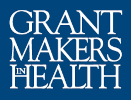What We Learned from the First Open Enrollment Period, and What to Expect from the Second
As work gets rolling for the second open enrollment period, it is an opportune time to reflect on lessons learned from the first open enrollment period, especially since the second one is shorter and there are fewer navigator resources available from the federal government.
The Legacy of The Bravewell Collaborative: Transforming Health Care through Integrative Medicine
A sea change is well underway in the United States regarding health, medicine, and health care delivery. By the early 2000s it was inescapable that obesity rates were climbing while medical costs were becoming unsustainable.
Supporting ACA/Medicaid Expansion Enrollment in Essex County, New Jersey
The goal of the Affordable Care Act—to provide access to health care to virtually all Americans through affordable health insurance that covers all essential services—coincides with The Healthcare Foundation of New Jersey’s mission to bring quality, affordable health care to the most underserved and vulnerable people in its community.
Working to Fill the Information Gaps in Cancer Care
Upon hearing the words “you have cancer” many questions are apt to run through a patient’s mind. Key among them is: Where do I go to get the best care? Today, meaningful information to help patients answer this question is lacking. The California HealthCare Foundation is funding projects to try to fill this gap.
Optimizing Health Insurance Marketplace Enrollment through Collaboration, Technical Assistance, and Promotion
The passage of the Affordable Care Act provided many health foundations an unprecedented opportunity to expand affordable coverage to lower-income and vulnerable people through the new health insurance marketplaces.
“Acting Bigger” by Partnering with Government
In the spring of 2014, the Southeastern Council of Foundations (SECF) convened more than a dozen health legacy foundation CEOs from throughout the southeastern United States to reflect on the Monitor Institute’s monograph, What’s Next for Philanthropy: Acting Bigger and Adapting Better in a Networked World.
Reflections on Building the Advocacy Capacity of Nonprofit Organizations
The Kansas Health Foundation reflects on a series of multiyear, targeted investments to build Kansas Action for Children’s advocacy capacity, and shares several lessons learned along the way.
Reclaiming Futures, Rebuilding Lives
The Kate B. Reynolds Charitable Trust has learned that although direct service grantmaking can yield immediate results, it often cannot address the underlying causes of poverty or make a lasting impact. To better address these challenges, the Trust has shifted the focus of some of its grantmaking to efforts designed to change the systems serving these populations.

